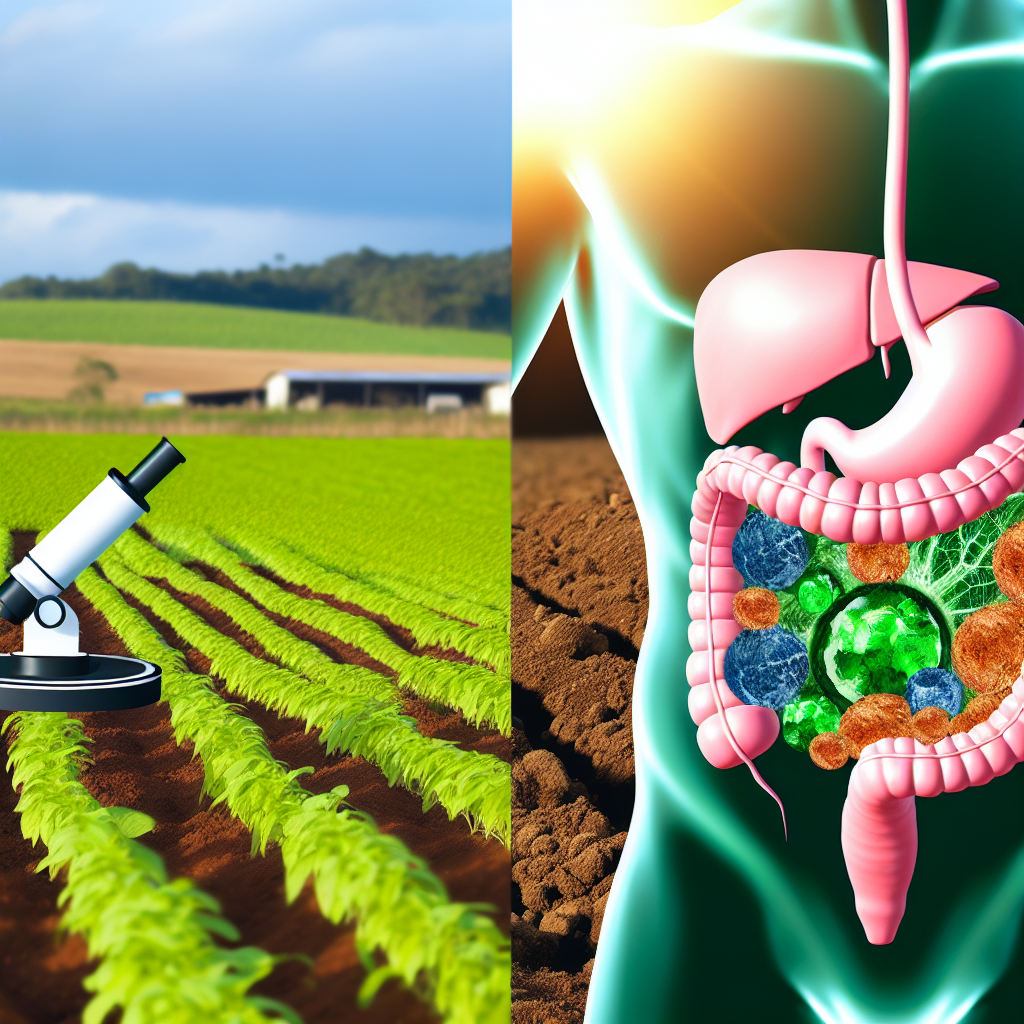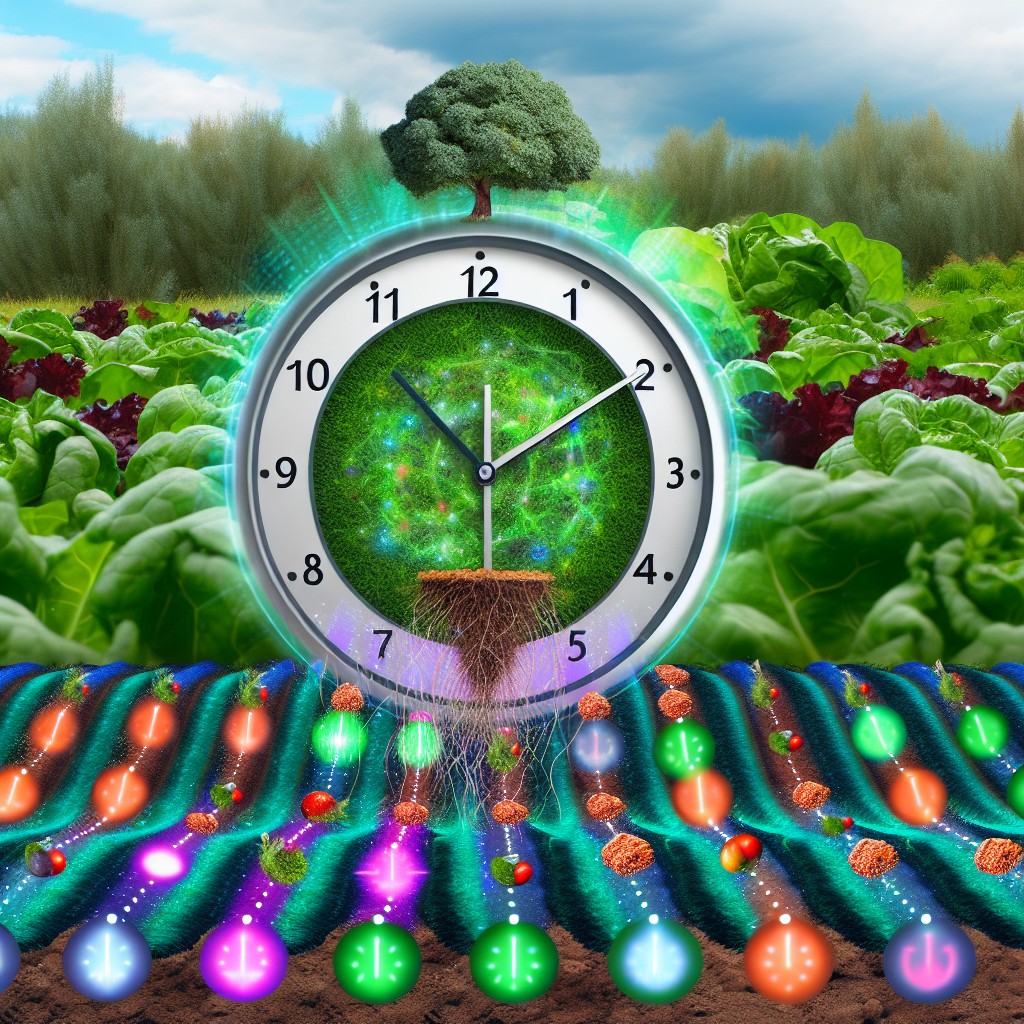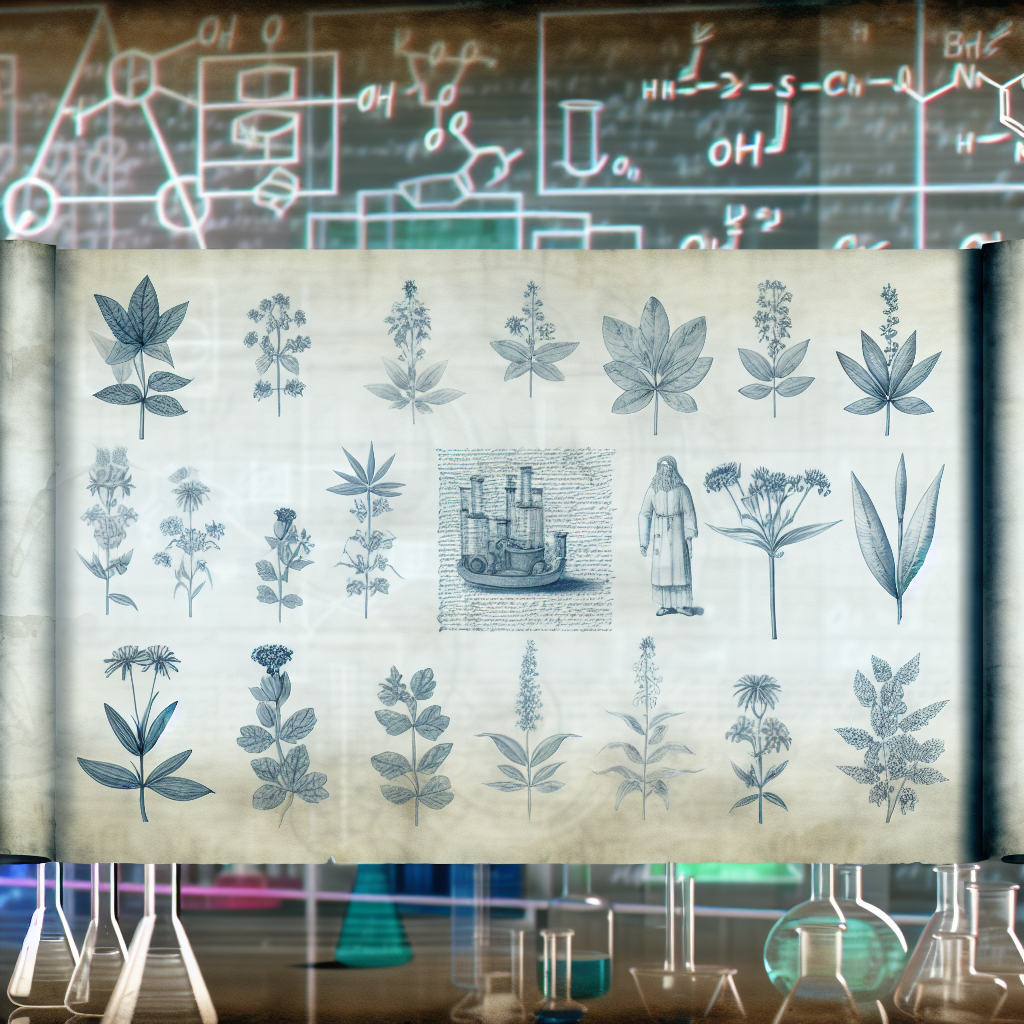The Soil-to-Gut Connection: How Regenerative Agriculture Impacts Nutritional Therapy
Introduction
In recent years, the conversation surrounding health and wellness has expanded beyond personal dietary choices to include the impact of agricultural practices on nutrition. One of the most promising fields emerging in this discussion is regenerative agriculture—a holistic approach to farming that prioritizes soil health, biodiversity, and ecosystem restoration. Unlike conventional farming methods that deplete the soil through chemical fertilizers, pesticides, and monocropping, regenerative agriculture focuses on replenishing soil nutrients, enhancing microbial diversity, and supporting natural ecosystems.
But how does this relate to nutritional therapy? The answer lies in the soil-to-gut connection—a concept that underscores the relationship between soil microbes, plant nutrients, and human gut health. When our food is grown in nutrient-rich, biologically active soil, it retains more vitamins, minerals, and phytonutrients, ultimately benefiting our overall health and wellness. Conversely, produce from degraded soils often lacks essential nutrients and may contribute to deficiencies that can trigger chronic diseases, inflammation, and weakened immunity.
Gut health plays a pivotal role in overall well-being, influencing digestion, metabolism, immune function, and even mental health through the gut-brain axis. Many chronic illnesses, including inflammatory diseases, metabolic disorders, and autoimmune conditions, have been linked to gut microbiome imbalances, often caused or exacerbated by poor dietary choices and nutrient-deficient foods. By embracing regenerative agriculture, we can heal our soils and, in turn, promote better gastrointestinal and systemic health.
Consumers today are becoming more educated on the quality of their food sources, opting for organic, sustainably grown, and regeneratively farmed produce. Nutrient-dense foods, cultivated in rich, biodiverse soils, may serve as a powerful tool in homeopathic and herbal treatments, providing natural cures for a variety of health concerns.
In this article, we will explore the science behind regenerative agriculture, its implications for nutritional therapy, and the medical research supporting the connection between soil health and human gut microbiota.
The Science Behind the Soil-to-Gut Connection
Microbiome-Enriched Soil: A Key to Nutrient-Dense Foods
Several studies demonstrate a direct correlation between soil microbiota diversity and the nutrient density of food. A detailed study published in Frontiers in Microbiology (2020) found that microbial communities in soil influence the availability and absorption of essential trace minerals such as zinc, magnesium, and iron in plants (source). These minerals play crucial roles in immune function, cognitive health, and metabolic regulation, underscoring the significance of soil microbiome diversity in human nutrition.
Regenerative Agriculture Increases Vital Phytonutrients
A study from The Journal of Advances in Agronomy (2021) revealed that regenerative farming enhances plant secondary metabolites (phytonutrients) such as flavonoids, polyphenols, and carotenoids (source). These compounds not only contribute to antioxidant activity but also serve as natural therapeutic agents in homeopathic and herbal medicine, aiding in inflammation reduction, cellular repair, and immune system regulation.
How Soil Microbes Influence Gut Health
The human gut microbiome—a vast ecosystem of bacteria, fungi, and archaea—plays a significant role in digestion, immunity, and even mental health. Research published in Nature Reviews Microbiology (2019) confirms that soil microbes influence the gut microbiota through the consumption of bioactive compounds, fermentable fibers, and polyphenols from regeneratively farmed foods (source). By consuming food grown in biodiverse, microbe-rich soil, we introduce beneficial bacteria and prebiotic compounds that enhance gut flora, support digestion, and lower inflammation-related disorders like irritable bowel syndrome (IBS) and leaky gut syndrome.
Depleted Soils: A Hidden Cause of Chronic Disease
A well-documented study from The Journal of Clinical Nutrition (2017) acknowledged that modern industrial farming has led to significant reductions in essential nutrients such as vitamin C, potassium, and B vitamins in common fruits and vegetables (source). The depletion of these vital nutrients may contribute to chronic disease epidemics, including diabetes, cardiovascular disease, and cognitive decline. This further underscores the need for a shift toward regenerative farming practices to restore nutrient density and mitigate disease risks.
The Powerful Synergy Between Regenerative Agriculture & Herbal Medicine
For individuals seeking natural remedies, herbal medicine and regenerative agriculture work synergistically. Adaptogenic herbs, which help the body respond to stress and inflammation, acquire their potency through enriched soil conditions. A study in Phytotherapy Research (2022) reported that medicinal herbs such as ashwagandha, turmeric, and echinacea exhibit increased bioactive compounds when grown in regenerative ecosystems (source). This suggests that natural therapies relying on botanical supplements could be more effective when sourced from regeneratively cultivated plants.
Conclusion: Healing Our Bodies by Healing Our Soils
The soil-to-gut connection is more than just a theory—it is a scientific reality that underscores the importance of regenerative agriculture in human health. As soil health diminishes through conventional farming practices, nutrient depletion and microbiome disruption contribute to a rise in chronic diseases, gut imbalances, and reduced resilience against inflammation. By prioritizing biodiverse, microbially active soils, regenerative agriculture restores the nutritional integrity of food, enhancing the vitamins, minerals, and therapeutic compounds essential for optimal health.
For those focused on natural remedies, homeopathy, and herbal treatments, the benefits of regenerative agriculture cannot be overstated. When we invest in resilient farming systems, we not only protect the environment but elevate the potency of plant-based therapies, making them more effective for holistic healing.
As consumers, embracing regenerative agriculture means supporting local, sustainable farms, selecting nutrient-dense organic produce, and promoting ecosystem health—all of which contribute to long-term wellness, both for our bodies and the planet. Through conscious food choices, we have the power to transform our health—and it starts from the ground up.
**Summary:**
The soil-to-gut connection is a scientific reality that underscores the importance of regenerative agriculture in human health. By prioritizing biodiverse, microbially active soils, regenerative farming restores the nutritional integrity of food, enhancing the vitamins, minerals, and therapeutic compounds essential for optimal health. This has significant implications for natural remedies, homeopathy, and herbal treatments, as nutrient-dense foods cultivated in rich soils can elevate the potency of plant-based therapies. As consumers, embracing regenerative agriculture supports local, sustainable farms, nutrient-dense organic produce, and ecosystem health, contributing to long-term wellness for both our bodies and the planet.

Dominic E. is a passionate filmmaker navigating the exciting intersection of art and science. By day, he delves into the complexities of the human body as a full-time medical writer, meticulously translating intricate medical concepts into accessible and engaging narratives. By night, he explores the boundless realm of cinematic storytelling, crafting narratives that evoke emotion and challenge perspectives.
Film Student and Full-time Medical Writer for ContentVendor.com



